

Thoughts of “the season of asterisks” aside, fans now need to grasp football money since Premier League fines and point deductions are dominating the news narrative.
The relegation struggle on the field might be greatly influenced by Everton and Nottingham Forest’s off-field rule violations, while Wolves, Aston Villa, and Leicester have just posted heart-stopping defeats.
BBC Sport aims to break down the Premier League picture overall in 11 charts with the assistance of football finance specialist Kieran Maguire and his database of club records until 2023.
Chelsea, Crystal Palace, Fulham, and Leeds did not have complete 2023 accounts available at the time of publication, so their numbers are based on 2022 accounts. Therefore, Fulham’s accounts are from their 2021–2022 Championship season. As soon as those accounts are made public on Companies House, we will update this story.
1 & 2. Revenues
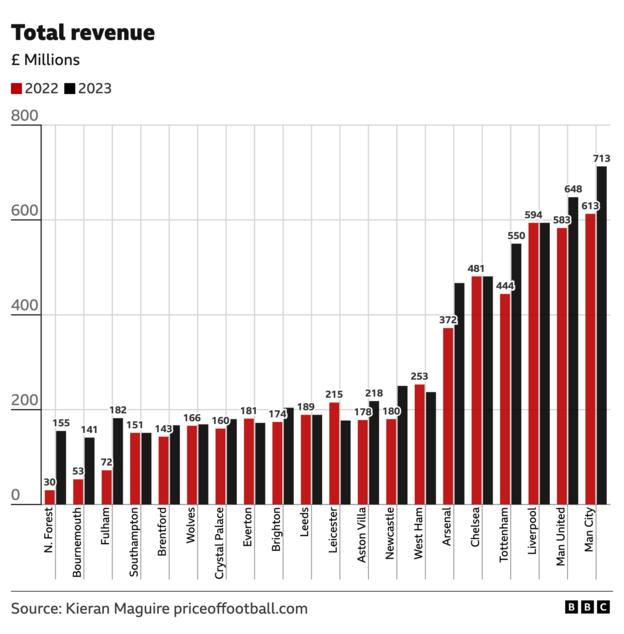
“The Premier League has been spectacularly successful since it started in 1992,” Maguire asserts. While consumer prices have risen by roughly 112% since then, Premier League revenue has surged by 2,800% during the same period.
“Clubs generate their revenue from three main sources: matchday, broadcast and commercial/sponsorship.”
The disparity between Newcastle and the “big six” of Manchester City, Manchester United, Liverpool, Chelsea, Arsenal, and Tottenham is evident in the combination of European football, more Premier League merit payments, and larger stadiums.
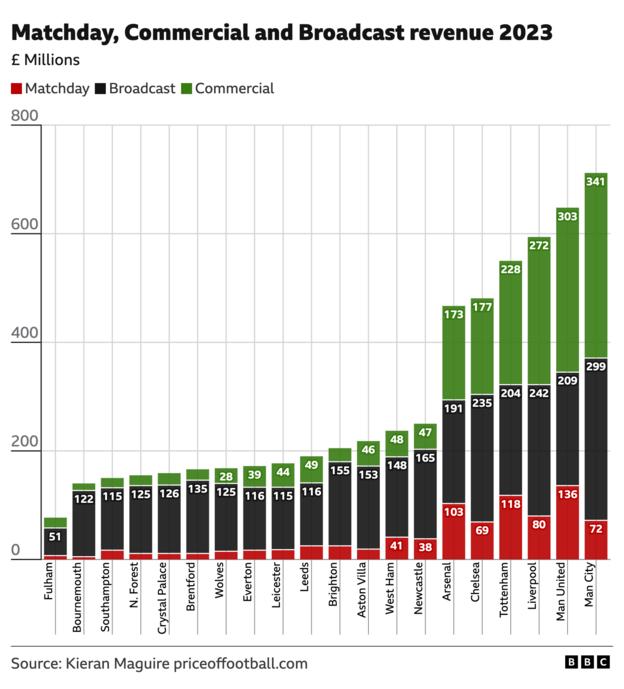
The largest ongoing expense of a team is wages.
Although Maguire claims that there is “an extremely high correlation between wages and final league position,” Leicester faces a clear risk and challenge given that they were relegated with the seventh-highest salary bill in 2023. The following figures illustrate this.
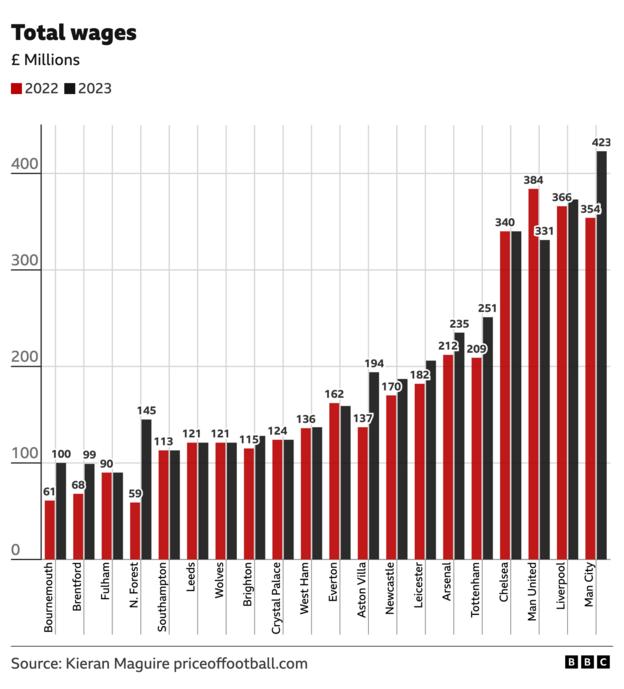
4. Average weekly wages
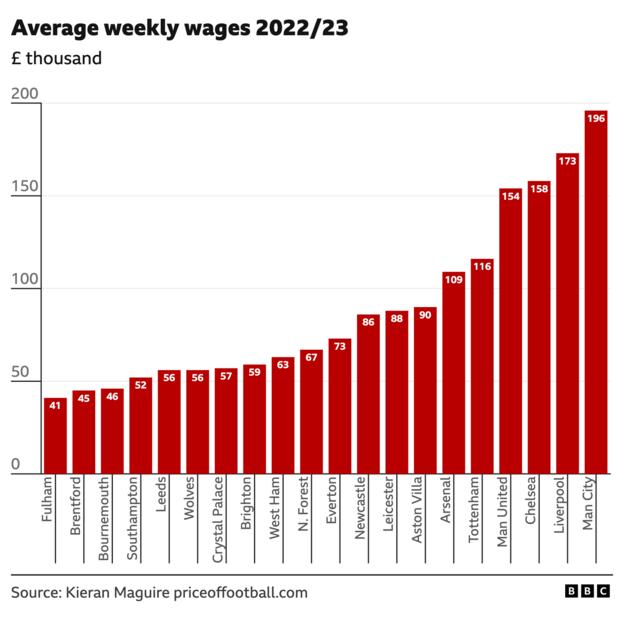
5. Wage percentage relative to income
Why is the wealth of pay data relevant?
The new Financial Fair Play (FFP) regulations from FIFA permit participating clubs to spend 90% of their revenue on salaries, transfers, and agent fees in 2023–2024; this amount drops to 80% in 2024–2025 and 70% in 2025–2026.
If the Premier League votes to alter its financial regulations for 2024–2025, it might adopt a ratio akin to this.
It is interesting to note that despite Fulham’s 2022 Championship season accounts, Leicester, Everton, and Forest are all at the top of this list despite being charged with Premier League Profit and Sustainability (PSR).
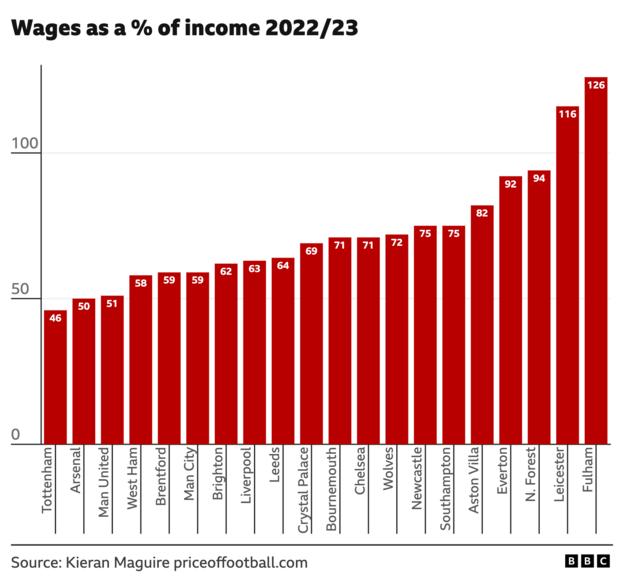
6. Depreciation
The term ‘amortisation’ was first used in football by Chelsea’s owner Todd Boehly, who employed a strategy of signing expensive young players to long contracts in order to spread the expense.
One well-known example was the eight-year contract that Enzo Fernandez signed as part of his £106 million move.
This graph, which includes all of the team’s players who have signed transfer fees, displays the overall amortization expense for the fiscal year. In the Premier League’s profit and sustainability (PSR) accounting, it is considered an expense.

7 & 8. Profit/loss
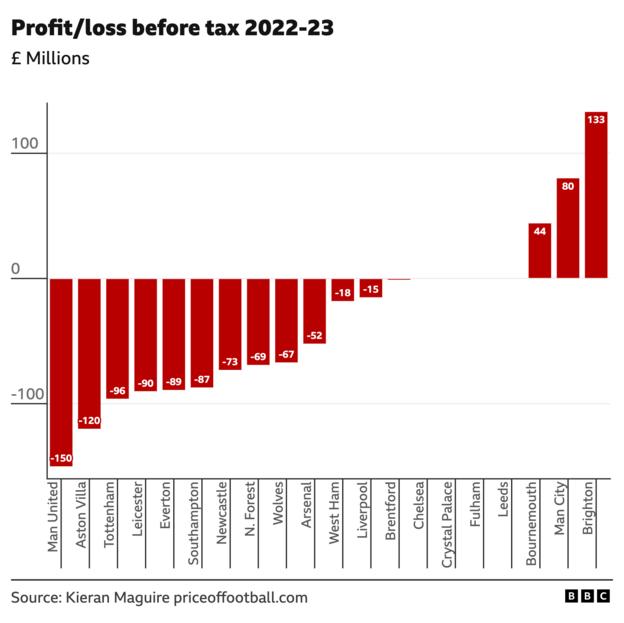
According to Maguire, salaries and transfer fees account for almost 90% of all Premier League income for each of the 20 teams, with the majority of them experiencing daily losses. The only ways to make up for the losses are to sell players or hope for the goodwill of the owners.
“It cost former Chelsea owner Roman Abramovich about £900,000 a week for 19 years in terms of interest-free loans to cover the club’s losses,” Maguire stated.
Clubs frequently include a profit before tax (PBT) statistic in their financial press releases. This amount includes the sale or purchase of players. For example, Bournemouth’s PBT figure is £44 million, whereas Everton’s is £89 million.
In addition, Maguire’s numbers display a more stark profit and loss chart for 2022–2023, excluding player sales proceeds because the market is “volatile” and unpredictable.
With the exception of the 2023 accounts of Chelsea, Crystal Palace, Leeds, and Fulham, all 20 Premier League clubs lost around £1 billion in daily trade. Only Brentford (£4 million) turned a profit in this graphic.
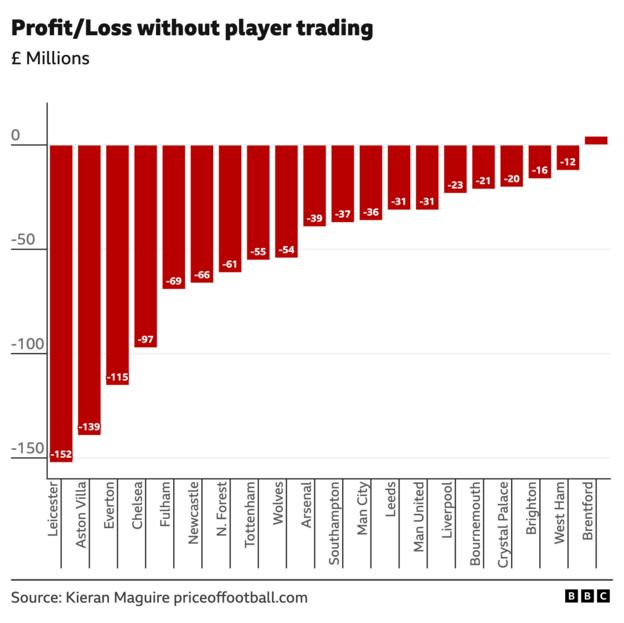
9. Player trading
As BBC Sport reported this week, Brighton’s profits of £123m after tax for 2022-23 were a Premier League record – and did not even include the combined £125m sale of Moises Caicedo and Roberto Sanchez to Chelsea.
They were one of very few Premier League clubs not to record a negative net spend from player trading, underlining the difficulty of executing owner Tony Bloom and chief executive Paul Barber’s strategy.
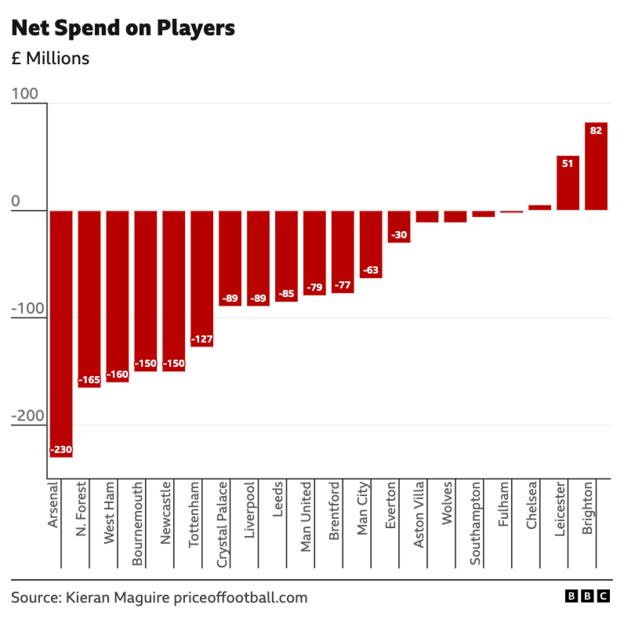
10. Total squad costs
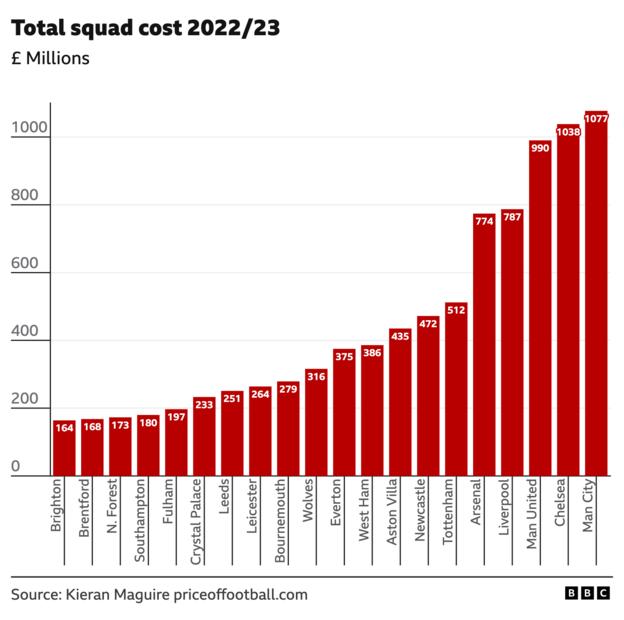
Another graphic that illustrates the strength of the “big six” is the one that shows wages and revenue.
According to Maguire: “At the end of 2022-23 Premier League clubs had invested over £9bn on transfer fees, building their squads over the years, with both Manchester City and Chelsea spending more than £1bn each.”
Here’s another table to help you understand that £9 billion amount.
Premier League net expenditure is compared to some of the biggest European teams in a ten-year study from the CIES Football Observatory on the greatest net-spending clubs worldwide since 2014.
| Highest net spending (2014-2023) | |
|---|---|
| 1. Manchester United – £1,196.6m | 11. Aston Villa – £414.3m |
| 2. Chelsea – £885.5m | 12. Liverpool – £395.3m |
| 3. Paris St-Germain – £865.8m | 13. Al-Hilal – £391.3m |
| 4. Arsenal – £746.9m | 14. Juventus – £385m |
| 5. Manchester City – £733.8m | 15. Everton – £336.1m |
| 6. Newcastle United – £575.2m | 16. Crystal Palace – £322.3m |
| 7. Barcelona – £568.4m | 17. Bournemouth – £294.9m |
| 8. Tottenham – £522.1m | 18. Bayern Munich – £294.1m |
| 9. AC Milan – £467.3m | 19. Real Madrid – £277.6m |
| 10. West Ham – £451.9m | 20. Nottingham Forest – £265.8m |
| Stats from CIES Football Observatory Monthly Report | |
With a total net spend of about £9.5 billion since 2014, the Premier League leads the Chinese Super League, which has spent £1.14 billion, and the Saudi Pro League, which has spent roughly £1.13 billion.
Comparatively, within the same time frame, player transactions brought in around £1.9 billion for the Portuguese Primeira Liga.
11. Total amount of debt
And now for the major one…
The game of football is costly. And then there is the substantial borrowing of teams like Tottenham or Manchester United for their new stadium.
“Net debt is the total amount of borrowings that a club has, less any cash,” Maguire explains.
His calculations indicate that the debt levels of Premier League clubs are at around £3.6 billion.
GET MORE NEWS HERE
Leave a Reply